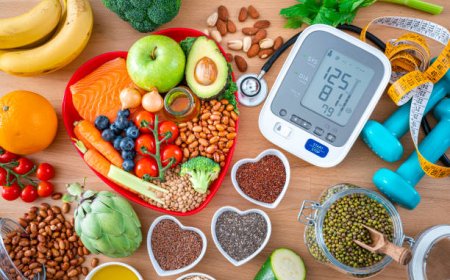Compare Foods: How to Make Nutritious Choices
Learn how to make nutritious food choices by comparing different types of foods. This article covers macronutrients, micronutrients, and healthy food options to promote good health.

Compare Foods: How to Make Nutritious Choices
Food is a basic need of the human body, and the choices we make have a significant impact on our health and well-being. With so many options available, it can be challenging to make informed decisions about what we eat. This article aims to provide an overview of the factors that can influence our food choices and guide readers on how to compare different types of food for optimal nutrition.
Understanding Nutritional Needs
Before we compare different types of food, it's essential to understand the nutrients required for optimal health. The human body needs six essential nutrients, including carbohydrates, protein, fat, vitamins, minerals, and water. Each nutrient plays a vital role in maintaining good health and preventing chronic diseases.
Comparing Macronutrients
Macronutrients are the primary components of food that provide energy to the body. They include carbohydrates, protein, and fat. When comparing different types of food, it's essential to consider the macronutrient content to make informed decisions.
Carbohydrates
Carbohydrates are the primary source of energy for the body, and they come in two forms, simple and complex. Simple carbohydrates, such as those found in sugar, are quickly digested and provide a rapid energy boost, while complex carbohydrates, such as those found in whole grains, are digested more slowly and provide sustained energy.
When comparing carbohydrate-rich foods, it's essential to choose complex carbohydrates that are high in fiber and low in sugar. Some good options include brown rice, quinoa, and sweet potatoes.
Protein
Protein is essential for building and repairing tissues in the body, and it's also a source of energy. When comparing protein-rich foods, it's important to choose lean protein sources that are low in saturated fat. Good options include chicken breast, fish, beans, and lentils.
Fat
Fat is an essential nutrient that provides energy and helps the body absorb vitamins. However, not all fats are created equal, and some types can increase the risk of chronic diseases. When comparing foods high in fat, it's important to choose healthy fats, such as those found in nuts, seeds, and fatty fish, and limit saturated and trans fats found in processed and fried foods.
Comparing Micronutrients
Micronutrients are the essential vitamins and minerals required for good health. When comparing different types of food, it's essential to consider the micronutrient content to ensure optimal nutrition.
Vitamins
Vitamins are essential nutrients required for maintaining good health. When comparing different types of food, it's essential to choose foods that are high in vitamins, such as leafy greens, citrus fruits, and whole grains.
Minerals
Minerals are also essential nutrients required for good health, and they play a vital role in maintaining strong bones, regulating the heartbeat, and maintaining fluid balance. When comparing different types of food, it's essential to choose foods that are high in minerals, such as dark leafy greens, nuts, and seeds.
Conclusion
Making informed food choices is essential for maintaining good health and preventing chronic diseases. When comparing different types of food, it's important to consider the macronutrient and micronutrient content to ensure optimal nutrition. By choosing complex carbohydrates, lean protein sources, healthy fats, and foods high in vitamins and minerals, we can make nutritious choices that promote good health.
What's Your Reaction?






















































